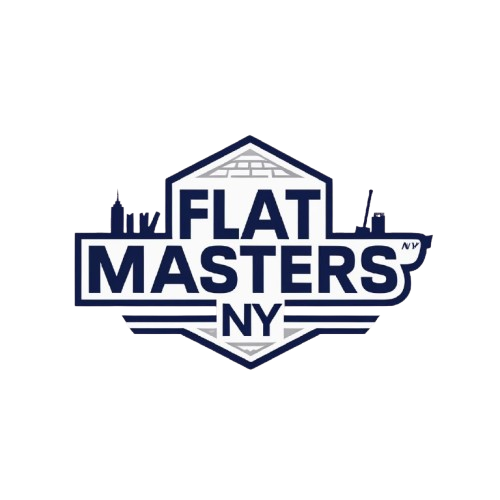Understanding Flat Roof Furring Strips: Your Complete Guide
After twenty-three years installing flat roofs across Queens, I've seen every shortcut and mistake imaginable when it comes to flat roof furring strips. Just last week on Queens Boulevard, I had to redo an entire commercial roof where another contractor skipped proper furring strip installation - water was pooling everywhere because the slope was completely wrong.
Look, furring strips might seem like a minor detail, but they're absolutely critical for proper drainage on flat roofs. Without them, you're basically guaranteeing yourself problems down the road.
What Are Flat Roof Furring Strips?
Furring strips are tapered wooden or composite strips that create slope on flat roofs to direct water toward drains and scuppers. They're typically made from pressure-treated lumber or engineered materials, and they run from the high points of your roof down to the drainage points. Think of them as the invisible highway system that keeps water moving where it needs to go.
In Queens, with our heavy spring rains and those brutal nor'easters that dump inches in hours, proper water management isn't optional. I've pulled up sections of roofing membrane that were completely destroyed because water sat stagnant for months - all because someone thought they could skip the furring strips.
Why Furring Strip Installation Matters More Than You Think
Here's something most property owners don't realize: a truly "flat" roof is actually a disaster waiting to happen. Building codes require a minimum slope of 1/4 inch per foot on flat roofs, but achieving that without furring strips is nearly impossible on most Queens buildings. The concrete deck might look level, but I guarantee it has low spots where water will collect.
My crew chief Miguel always says, "Water finds the low spot like a heat-seeking missile." He's been with Flat Masters NY for twelve years, and he's absolutely right. We use laser levels to map every roof surface before installing furring strips because even a 1/8 inch depression can cause major headaches.
| Furring Strip Material | Cost Per Linear Foot | Durability | Best Use |
|---|---|---|---|
| Pressure-Treated Pine | $2.50 - $4.25 | 15-20 years | Residential, light commercial |
| Composite Lumber | $6.75 - $9.50 | 25-30 years | Heavy commercial, harsh conditions |
| Tapered Insulation | $3.80 - $7.20 | 20-25 years | Energy-efficient applications |
| Perlite Concrete | $4.15 - $6.90 | 30+ years | Large commercial, permanent solution |
How to Make Furring Strips for Flat Roof Applications
Now, here's where I see a lot of DIYers and even some contractors get into trouble. You can't just rip some 2x4s at random angles and call it good. There's actually a science to creating proper furring strips that'll work long-term.
First, you need to calculate the exact slope requirements for your specific roof. We use a minimum of 1/4 inch per foot, but on larger roofs - especially those warehouse buildings in Long Island City - we often go with 3/8 inch per foot to ensure positive drainage even if the strips settle slightly over time.
For residential jobs, I typically use pressure-treated pine cut to specific tapers. We get our lumber from Haber Lumber on Northern Boulevard - they've been cutting custom tapers for us for over fifteen years. The key is starting with kiln-dried material that won't shrink and warp after installation.
Here's my process: Map the roof with a transit level, identify all high and low points, calculate the required slope angles, then cut strips accordingly. The thick end might be 3 inches while the thin end tapers down to nothing - it all depends on your specific drainage plan.
Professional Installation Techniques That Actually Work
Installing furring strips isn't just about nailing them down and hoping for the best. The attachment method is crucial, especially here in Queens where we get those wicked winter freeze-thaw cycles that can literally pop fasteners right out of the deck.
We use a combination of construction adhesive and mechanical fasteners - typically 3-inch galvanized screws spaced every 12 inches on center. The adhesive provides immediate bond strength while the screws ensure long-term attachment. I learned this technique from an old-timer named Frank DiMarco back in 2003, and I've never had a single furring strip failure since.
The spacing between strips is critical too. Most codes allow up to 24 inches on center, but I prefer 16 inches for residential and 12 inches for commercial applications. That extra support prevents membrane sagging between strips, which can create those little valleys where water collects and eventually causes leaks.
One thing that drives me crazy is seeing contractors install furring strips without considering thermal movement. Wood expands and contracts with temperature changes, and if you don't account for this, you'll get buckling and membrane stress. We always leave 1/8 inch gaps between strip ends and use flexible sealants at all joints.
Common Mistakes That Cost Property Owners Thousands
I've been called out to fix more botched furring strip installations than I care to count. The most expensive mistake? Not coordinating the strip layout with roof drains and scuppers. I once saw a job where the contractor ran strips perpendicular to the drainage flow - water was actually being directed away from the drains!
Another major error is using untreated lumber or the wrong species. I pulled up furring strips made from regular construction lumber that had completely rotted away within three years. The property owner in Astoria had to replace not just the strips but the entire membrane because decay had spread to the substrate.
And please, for the love of everything holy, don't try to create slopes with different thicknesses of rigid insulation. I see this attempted shortcut all the time, and it never works. The insulation compresses unevenly, creating dips and valleys that trap water. Proper tapered insulation systems are engineered specifically for this purpose - random foam board stacking is not.
Material Selection for Queens Weather Conditions
Living and working in Queens means dealing with some pretty harsh conditions. We get everything from humid summers that promote rot to winter storms that can dump three feet of snow on a roof. Your furring strip material needs to handle all of it.
For most residential applications, I stick with pressure-treated southern yellow pine. It's cost-effective, readily available, and handles our climate well when properly installed. But for commercial jobs or roofs near the water - like those buildings along the East River - I upgrade to composite materials or even engineered lumber products that won't absorb moisture.
The salt air is particularly brutal on untreated materials. I've seen furring strips on buildings near LaGuardia completely destroyed by corrosion within five years. It's worth spending the extra money upfront for marine-grade materials in these applications.
Cost Considerations and Long-Term Value
Property owners always want to know what furring strip installation costs, and honestly, it varies widely depending on roof size, accessibility, and material choice. For a typical 2,000 square foot residential flat roof in Queens, you're looking at $1,800 to $3,200 for professional installation including materials.
That might seem like a lot, but consider the alternative. I've seen property owners spend $15,000 to $25,000 on emergency roof repairs because they skipped proper drainage during initial installation. Water damage doesn't just affect the roof - it can compromise your entire building structure.
The math is pretty simple: spend a few thousand on proper furring strips now, or potentially spend tens of thousands on water damage repairs later. Plus, proper drainage extends the life of your roofing membrane by preventing standing water that causes premature aging.
When to Call the Professionals
Look, I'm all for DIY projects, but furring strip installation really isn't one of them unless you have serious construction experience. Getting the slopes wrong can create problems that won't show up for months or even years, and by then the damage is usually extensive.
The tools alone - transit levels, chalk lines, circular saws capable of cutting precise tapers - represent a significant investment for a one-time project. And don't get me started on the safety concerns of working on flat roofs, especially in Queens where many buildings are three stories or higher.
At Flat Masters NY, we've been handling furring strip installations across Queens since 2001. My team knows how to work around HVAC equipment, skylights, and all the other obstacles that make these jobs tricky. We also pull permits when required and make sure everything meets current building codes.
If you're dealing with ponding water on your flat roof, or if you're planning a roof replacement, give us a call at (917) 994-7618. We'll come out and assess your drainage situation - sometimes a properly designed furring strip system is all you need to solve persistent water problems.
Remember, your roof is your building's first line of defense against the elements. Don't compromise on the foundation of that protection just to save a few dollars upfront. Trust me, I've seen too many roofs fail because someone cut corners on the basics.

